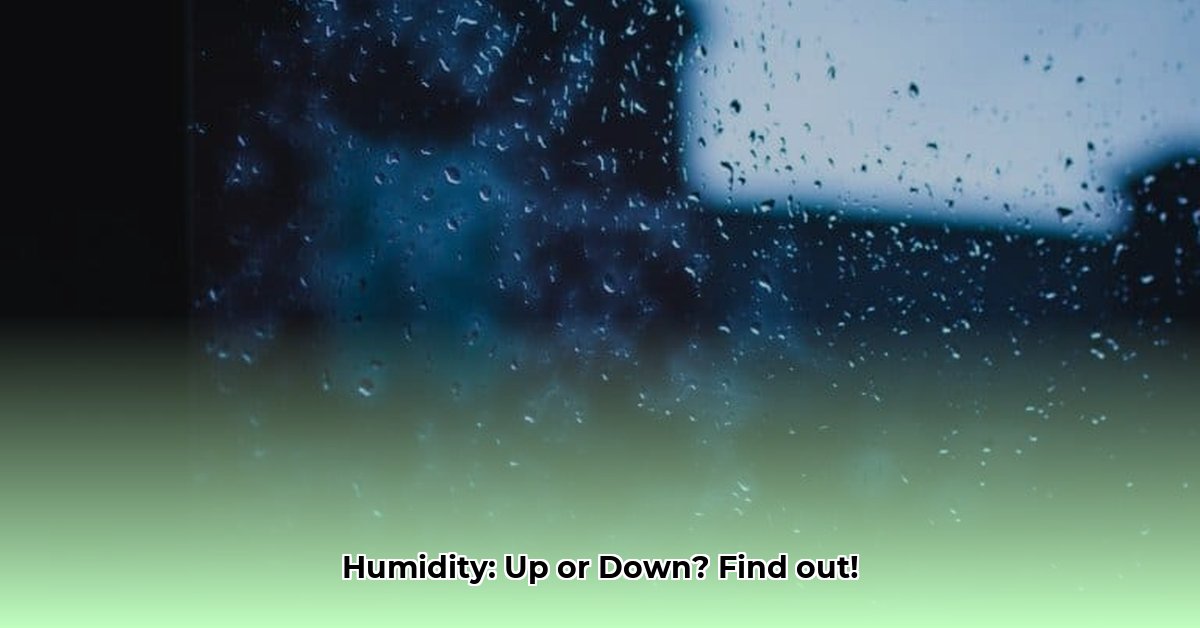Does humidity rise? It’s a question that makes a lot of folks scratch their heads. The answer isn’t a simple up or down. It’s more like a dance between water vapor, temperature, and air density. Let’s clear the air (pun intended!) and explore this fascinating weather phenomenon.
Humidity vs. Humid Air: What’s the Difference?
Before we get started, let’s define a few key terms:
| Term | Definition |
|---|---|
| Humidity | The amount of water vapor present in the air. |
| Relative Humidity (RH) | The percentage of water vapor in the air compared to the maximum it could hold at that temperature. |
| Absolute Humidity | The total mass of water vapor in a given volume of air, regardless of temperature. |
Now, back to our original question. It’s not humidity itself that rises, but humid air. Humidity is simply the measure of water vapor in the air. It’s like sugar dissolved in water – the sugar doesn’t rise on its own, but the sugary water can move as a whole.
Why Does Humid Air Rise? Think Hot Air Balloon!
Humid air rises because it’s less dense than dry air. Remember, air is mostly nitrogen and oxygen, which are relatively heavy molecules. Water vapor (H₂O) is lighter than both. So, when air gets humid, it’s like adding helium to a balloon—it gets lighter and more buoyant. Just like a hot air balloon ascends, so does humid air. This rising action is a key player in cloud formation and weather patterns.
Relative Humidity: A Shifting Target
Relative humidity can be a bit tricky. It doesn’t measure the total amount of water vapor in the air, but rather how much moisture the air currently holds compared to its maximum capacity at that temperature. This is where temperature plays a crucial role.
Imagine air as a sponge. A warm sponge can hold more water than a cold one, right? Similarly, warm air can hold more moisture than cold air. So, if you increase the temperature but the amount of water vapor stays the same, the relative humidity decreases. It’s like pouring the same amount of water into a larger glass – the level appears lower.
Conversely, when you cool the air, the relative humidity increases, even if the absolute amount of moisture remains constant. This is why you get condensation on a cold glass on a humid day – the air surrounding the glass cools, its capacity for moisture decreases, and the excess water vapor condenses.
How Does Temperature Affect Humidity? It’s a Balancing Act
The relationship between temperature and relative humidity is like a seesaw: when one goes up, the other tends to go down. As temperature increases, the air’s capacity for moisture expands, causing the relative humidity to fall. As temperature decreases, the air’s capacity shrinks, and relative humidity rises.
Humidity and Comfort: Why Muggy Days Feel So Sticky
High humidity makes us feel sticky and uncomfortable because it hinders our body’s natural cooling mechanism – sweating. When sweat evaporates, it takes heat away from our skin. But when the air is already saturated with moisture (high relative humidity), sweat evaporates more slowly, leaving us feeling hot and bothered.
Controlling Humidity at Home: Finding the Sweet Spot
Maintaining a comfortable humidity level in your home, typically between 30% and 50%, is crucial for comfort and health. Here are some tips:
Reducing Humidity:
- Air Conditioning: AC units naturally dehumidify by cooling the air, causing excess moisture to condense.
- Ventilation: Exhaust fans in bathrooms and kitchens help expel humid air. Proper ventilation in attics and crawl spaces is also important.
- Dehumidifiers: These appliances actively remove moisture from the air.
Increasing Humidity:
- Humidifiers: These add moisture to dry air, especially helpful during winter.
- Houseplants: Plants release water vapor through transpiration, naturally increasing humidity.
- Boiling Water: A simple way to add moisture to a single room.
Ongoing Research: The Ever-Evolving Science of Humidity
Scientists continue to explore the multifaceted nature of humidity. Current research focuses on how humidity interacts with weather patterns, climate change, and human health. Some studies suggest a link between humidity and the transmission of airborne viruses. This is a dynamic field, and our understanding of humidity’s impact is likely to evolve.
- Doctor Work Life Balance: Proven Strategies for Physician Well-being - November 20, 2025
- Find Your Work-Life Harmony: Quotes for a Fulfilling Life - November 18, 2025
- CRNA Work-Life Balance: Strategies for a Healthier Lifestyle - November 16, 2025















